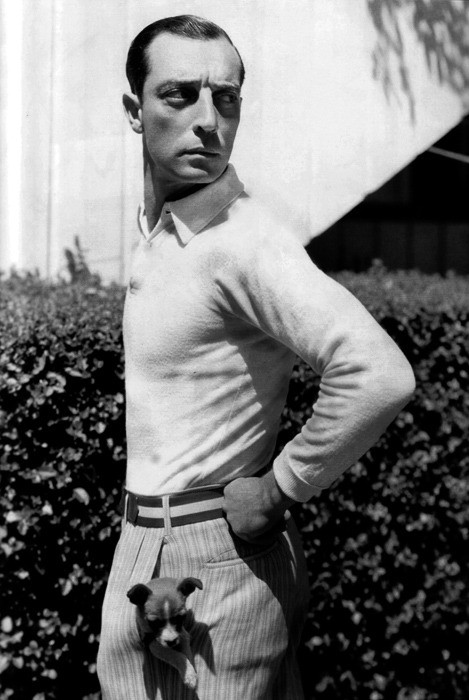(linky)
extraordinary accessory
extraordinary theme
In the 1920s, if people had a party, they had an extraordinary theme. You know, the Sitwells would have a ‘paradox party’ where you had to come as a new paradox. But now invitations come covered in banners like a bad website. People can’t be bothered to throw a party without getting it sponsored by vodka manufacturers or ghastly luxury goods companies …. It’s so squalid and dispiriting.
Stephen Fry
from here
jazz in france: purely speculation
I like thinking about the American jazz musicians who went to France. I like to think of the African American musicians, persecuted and segregated and marginalised while record companies and promotors made squillions from their music, escaping to Paris where they were appreciated and valued and feted as musical giants.
I like thinking about American musicians meeting French and European musicians in Paris and getting together to make new music. I like thinking of the gypsy tradition getting together with the African American tradition and making music which subverted and transgressed and basically broke all the freeking rules.
 I think this is why I like this album. You can hear Django and Stephan quite clearly, and you just know they were having lots of fun. I like imagining these guys getting together in a small back room and playing their hearts out. The locals excited to be playing with American friends they’d admired from afar; the American visitors excited to be playing with the amazing local talent.
I think this is why I like this album. You can hear Django and Stephan quite clearly, and you just know they were having lots of fun. I like imagining these guys getting together in a small back room and playing their hearts out. The locals excited to be playing with American friends they’d admired from afar; the American visitors excited to be playing with the amazing local talent.
 I like this album as well. The story behind these recordings is a good one. After Glenn Miller was lost at sea during the war some members of his band were left in France with little money to cover their expenses. So they recorded some action with some local talent, including Django. These recordings are far hotter and more exciting than any of Miller’s later work (though his early gear is fully sick).
I like this album as well. The story behind these recordings is a good one. After Glenn Miller was lost at sea during the war some members of his band were left in France with little money to cover their expenses. So they recorded some action with some local talent, including Django. These recordings are far hotter and more exciting than any of Miller’s later work (though his early gear is fully sick).
I don’t know much about American jazz in France, but I like thinking about it. It also reminds me that Ken Burns’ Jazz documentary sold itself (and its audiences) short with its insistence that jazz is a purely American phenomenon.
This sort of thinking also reminds me of the effects of musicians touring in Australia during the same period. Not to mention dancers.
As I said, I know next to nothing about this. But it’s something I like to imagine. Especially the bit about black American musicians leaving a country where they couldn’t even stay in the same hotels or eat in the same restaurants as white musicians, and arriving in France where their music was massively popular and the people were really excited just to meet them.
fahim’s fast food do orsm tandoori
194 Enmore Road, approximately.
We ride our bikes there from the hood. You can get the train to Newtown then walk up Enmore for a few blocks, past the theatre til you get there. It’s crowded and busy and not super clean. They do really good tandoori and really good naan. The rest is neither here nor there. Go there for the meat-on-sticks. They have some veggie dishes, it’s not very expensive to eat a whole dinner there, and you can take your kids. If they eat hot food. It’s a little more than Skip-hot curry, but not as hot as Indian-hot curry. As the doods at Bismi used to describe it.
View Larger Map
again?
Another DJ roster. Geez. At least this one’s simpler. The politics no less… challenging.
recent emusicing
Jim Cullum Jazz Band Chasin’ the Blues. Just a few songs from this album, mostly because I’m a bit over this New Orleans revival sound. This album is really pretty freakin good, though. These are all live performances, and they rock. Their version of ‘Bugle Call Rag’ is lots of fun.
Each month I pick up a couple of songs from the Preservation Hall Jazz Band. This time from Shake That Thing. I like the shouty, live-ish feel of their stuff.
Bill Coleman in Paris 1936-1938. This isn’t something new. The recordings feature some top gun musicians: Stéphane Grappelli, Django Reinhardt, etc etc. I picked up this entire album.
Some Joe Liggins from the 1946-1948 Classics collection and the 1944-46 collection. This is solid jump/rhythm n blues stuff which I tend to put in the same category as Louis Jordan. Not exactly awesome lindy hopping action, but great fun nevertheless.
A couple of things from Celebrating Bix!. This has some pretty shit-hot musicians on it. I was following Vince Giordano around emusic and found this. More revival stuff.
The problem with this revival stuff is that it often lacks the fire of the originals – it’s technically pretty amazing, it’s clean, it’s crisp, but it can often feel a little sanitised. Too perfect.
long overdue roundup
I’d really like:
Gordon Webster’s CD ‘Happy When I’m With You’;
Duke Heitger‘s CDs ‘Prince of Wails’, ‘Krazy Kapers’, ‘Duke Heitger’s New Orleans Wanderers;
Probably some other ones as well.
I’d also like to get over this cold I’ve had since Wednesday. I’ve been lying in bed napping and watching telly for days and it’s getting really old.
The Squeeze has installed the new version of Movable Type. It’s pretty fancy. I should probably have switched to a better blogging application, but that’s a lot of work. Meanwhile, MT and I are struggling on together.
Twitter has stolen my life. Mostly because I can use it on The Squeeze’s old ipod touch when I’m lying in bed being pathetic.
We have bought a flat and are moving in in three weeks. I haven’t booked a mover, bought paint for the painting we’ll do in two weeks, finished packing, given notice to our land lord or… done a bunch of other jobs. I’m not freaking. I have booked the lawn mower guy to come do the lawns the week we move out.
SLX was fun, but boy did I get a heavy dose of the exchange flu for my efforts. We have another exchange coming up in the near future (SSF) and I hope I’m together for that. We’ll see. Then it’s MLX in November in Melbourne, and I really hope I’m well by then – it’s the biggest social dancing event of the year for me. And DJing. I’d like to get a bit on top of my DJing for that.
PS I’ve just come across this great set of live toobs of Heigter playing in a restaurant, over on Jazz lives.
i’m not sure about natalie portman
Watching a film this afternoon I asked myself what possessed Natalie Portman to keep taking roles where her character is tortured. Is it something in her, that this torture satisfies some sort of inner masochism? Is it that she is continually cast as victim, as vulnerable by directors and casting agents who see a vulnerability in her? Who knows – I wouldn’t speak for her. But this has made me think about actresses taking on these types of roles.
There are few roles in cinema (both mainstream and otherwise) depicting women as strong and independent and free of the threat of violence or otherwise immune to vulnerability. To work, an actress simply must accept roles which present them – as the body a character occupies, as the craftswoman creating this persona – as vulnerable. Weak. Potentially victim of violence of all types. Does the actress refuse these roles, and perhaps not work? If she accepts these roles, is she complicit in this representation of women?
zora neale hurston
I keep returning to Zora Neale Hurston.

Negro dancing is a dynamic suggestion. No matter how violent it may appear to the beholder, every posture gives the impression that the dancer will do much more. For example, the performer flexes one knee sharply, assumes a ferocious face mask, thrusts the upper part of the body forward with clenched fists, elbows taut as in hard running or grasping a thrusting blade. That is all. But the spectator himself adds the picture of ferocious assault, hears the drums and finds himself keeping time with the music and tensing himself for the struggle. It is compelling insinuation. That is the very reason the spectator is held so rapt. He is participating in the performance himself – carrying out the suggestions of the performer.
The difference in the two arts is: the white dancer attempts to express fully; the Negro is restrained, but succeeds in gripping the beholder by forcing him to finish the action the performer suggests. Since no art can ever express all the variations conceivable, the Negro must be considered the greater artist, his dancing is realistic suggestion, and that is about all a great artist can do (Zora Neal Hurston)
Hurston, Zora Neale, “Characteristics of Negro Expression” The Jazz Cadence of American Culture. Ed. Robert G. O’Meally, 1998. New York: Columbia University Press, 298-310.
(I can’t find the original date for this right now – will look later).
I like this discussion of performer/spectator interaction, and the necessity of spectators participating in the performance. This is call-and-response at another level.

